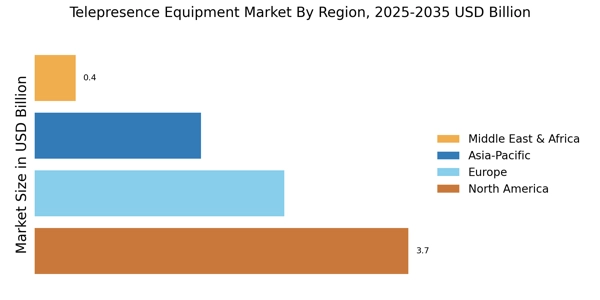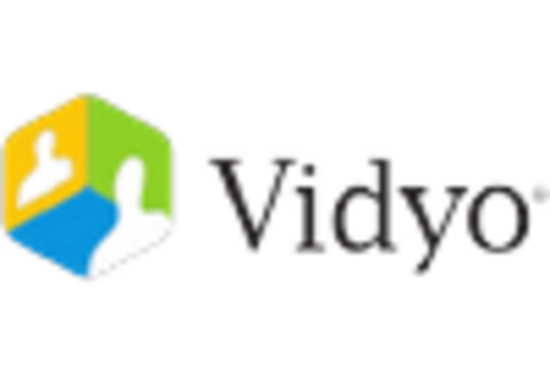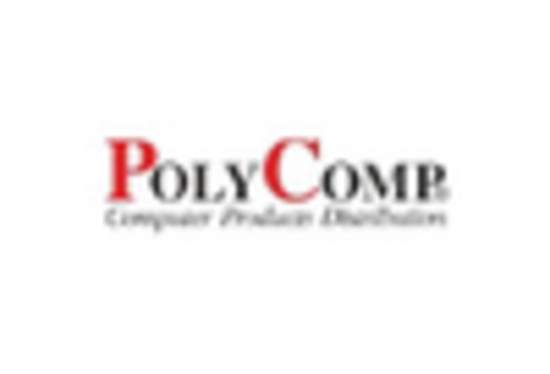Increased Focus on Cost Efficiency
Cost efficiency is becoming a crucial consideration for organizations, driving growth in the Telepresence Equipment Market. As businesses look to optimize operational expenses, investing in telepresence solutions can lead to significant savings in travel costs and time. Studies indicate that companies can reduce travel expenses by up to 30% by adopting telepresence technology. This financial incentive is compelling organizations to explore telepresence options as a viable alternative to traditional face-to-face meetings. Furthermore, the long-term return on investment associated with telepresence equipment is appealing, as it not only enhances communication but also contributes to overall productivity. Consequently, the Telepresence Equipment Market is likely to experience sustained growth as more companies recognize the cost benefits of these solutions.
Rising Adoption in Education Sector
The education sector's increasing adoption of telepresence technology is a notable driver for the Telepresence Equipment Market. Educational institutions are leveraging telepresence solutions to facilitate remote learning and enhance student engagement. With the rise of online education, telepresence equipment is being utilized to create immersive learning experiences that connect students and educators across distances. Recent reports indicate that the education segment is expected to account for a significant share of the telepresence market, with projections suggesting a growth rate of around 20% in this sector over the next few years. This trend highlights the potential of telepresence technology to transform educational methodologies and improve access to quality education, thereby propelling the Telepresence Equipment Market forward.
Growing Demand for Remote Collaboration
The increasing need for effective remote collaboration tools is a primary driver of the Telepresence Equipment Market. As organizations continue to embrace remote work, the demand for high-quality telepresence solutions has surged. According to recent data, the market for telepresence equipment is projected to grow at a compound annual growth rate of approximately 15% over the next five years. This growth is fueled by the necessity for seamless communication and collaboration among geographically dispersed teams. Companies are investing in telepresence technology to enhance productivity and maintain a competitive edge. The Telepresence Equipment Market is thus witnessing a significant uptick in demand as businesses seek to improve their virtual meeting experiences and foster a more connected workforce.
Emerging Markets and Expanding Applications
Emerging markets are presenting new opportunities for the Telepresence Equipment Market. As economies develop, there is a growing recognition of the importance of effective communication tools in various sectors, including healthcare, corporate, and government. Telepresence technology is being increasingly adopted in these regions to enhance collaboration and streamline operations. For instance, healthcare providers are utilizing telepresence solutions for remote consultations and patient monitoring, which is expected to drive market growth. Additionally, the expansion of telepresence applications across different industries is likely to contribute to the overall market expansion. Analysts predict that the Telepresence Equipment Market will see a notable increase in demand from emerging markets, as businesses and institutions seek to modernize their communication infrastructure.
Advancements in Video Conferencing Technology
Technological advancements in video conferencing are significantly influencing the Telepresence Equipment Market. Innovations such as 4K video resolution, improved audio quality, and enhanced user interfaces are making telepresence solutions more appealing to businesses. The integration of artificial intelligence and machine learning into these systems is also enhancing functionality, enabling features like real-time translation and automated meeting summaries. As organizations increasingly prioritize high-quality communication tools, the market for telepresence equipment is expected to expand. Recent estimates suggest that the video conferencing segment alone could account for over 40% of the total telepresence market by 2026. This trend indicates a robust growth trajectory for the Telepresence Equipment Market as companies seek to leverage cutting-edge technology to facilitate better interactions.


















Leave a Comment